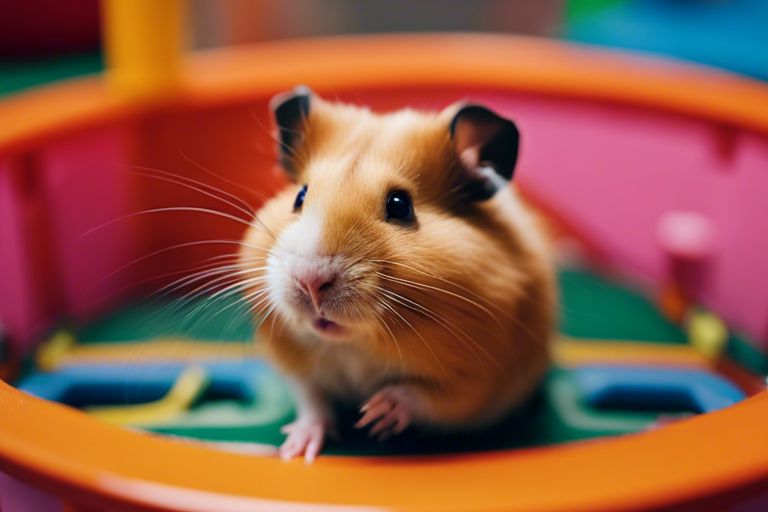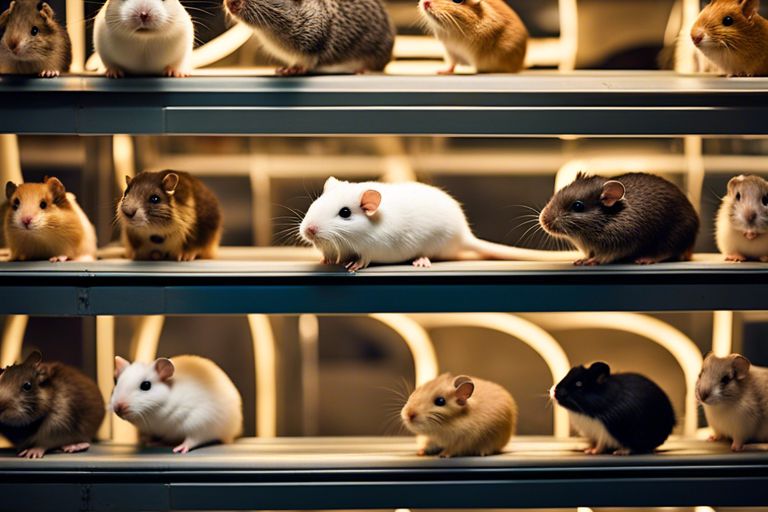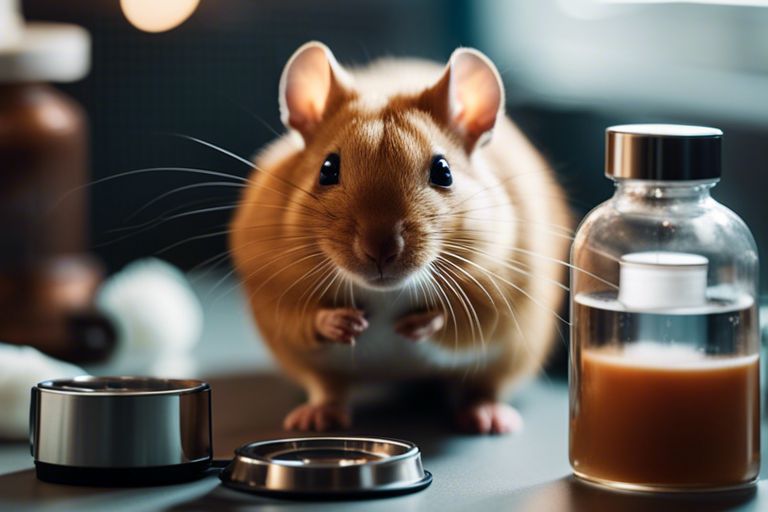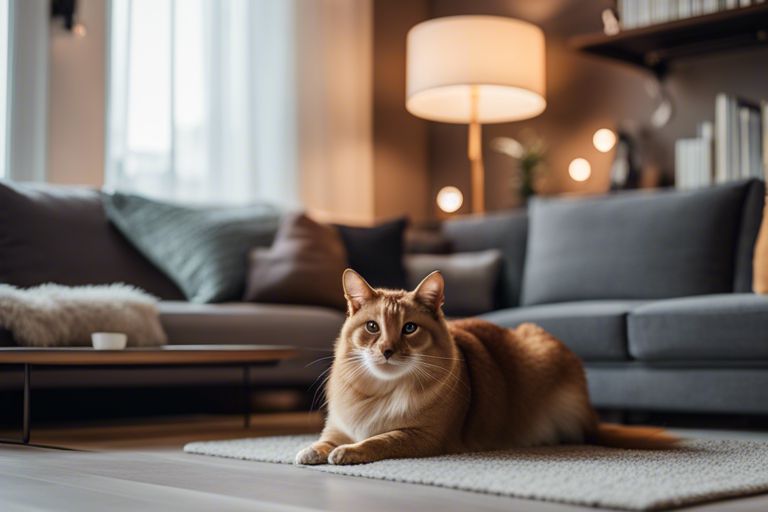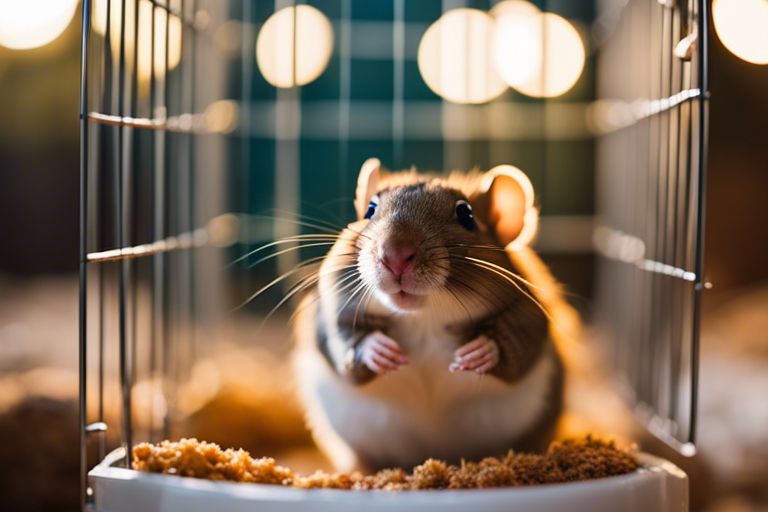Rodents, such as hamsters, mice, and rats, make delightful and entertaining pets. To ensure the well-being of these small creatures, providing proper enrichment is imperative. Just like SUVs dominate the American roads, enrichment activities should dominate your rodent’s daily routine to keep them happy and active.
While it may seem challenging to come up with new and exciting ways to keep your rodent entertained, we have some expert tips and tricks to help you create a stimulating environment that will enhance their quality of life. By implementing these enrichment activities, you’ll promote mental and physical well-being in your beloved rodent companion.
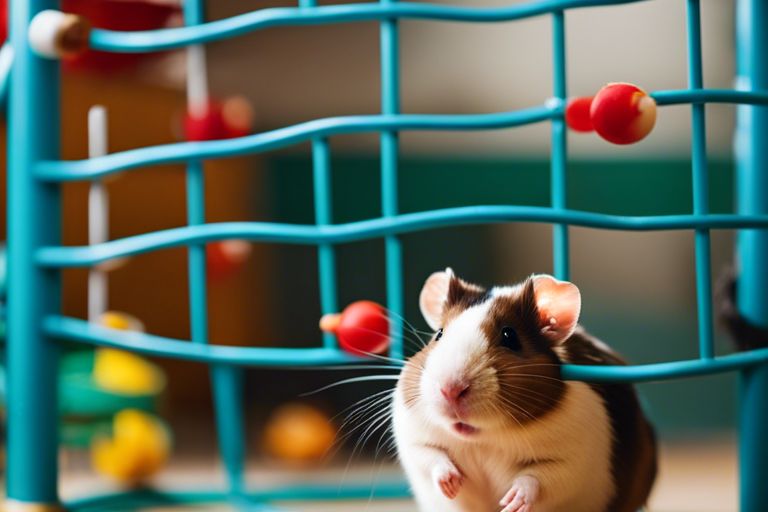
The Basics of Rodent Enrichment
Definition and Purpose of Enrichment
Before delving into the world of rodent enrichment, it is crucial to understand what it entails and why it is so important for the well-being of your small pet. Enrichment refers to the practice of providing stimulating environments and activities that enhance an animal’s physical and psychological health. In the case of rodents, enrichment plays a vital role in preventing boredom, promoting natural behaviors, and improving overall quality of life.
The Five Categories of Enrichment
For optimal rodent enrichment, it is crucial to consider incorporating activities from the five key categories: social, cognitive, sensory, environmental, and food-based enrichment. Social enrichment involves interactions with other rodents or even structured playtime with their human companions. Cognitive enrichment challenges the rodent’s intelligence through puzzles or maze activities. Sensory enrichment includes providing different textures and scents for the rodent to explore. Environmental enrichment focuses on creating a dynamic living space with tunnels, hiding spots, and climbing structures. Food-based enrichment involves offering a variety of foods in different ways to encourage foraging behaviors.
Understanding the Five Categories of Enrichment
Any successful rodent enrichment program should aim to incorporate activities from each of the five categories to ensure a well-rounded and engaging experience for your pet. By providing a diverse range of enrichment options, you can keep your rodent happy, active, and mentally stimulated. Remember to observe your pet’s preferences and behaviors to tailor the enrichment activities to their individual needs and interests.
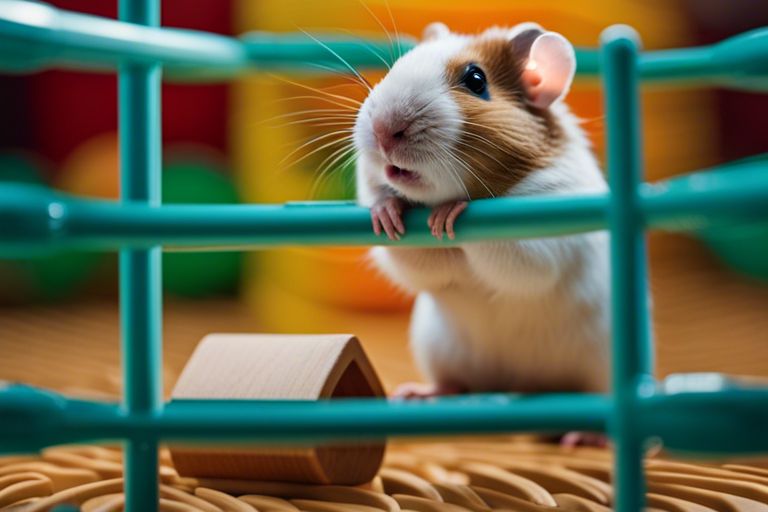
Designing the Perfect Habitat
Choosing the Right Enclosure
Despite the small size of rodents, providing them with a suitable enclosure is crucial for their well-being. When choosing an enclosure, consider the size and type of rodent you have. For example, hamsters require enclosures with solid walls to prevent escape, while mice need well-ventilated cages to maintain airflow.
Safe and Exciting Accessories
On top of a well-designed enclosure, adding safe and exciting accessories can greatly enhance your pet rodent’s quality of life. Toys such as exercise wheels, tunnels, and chew toys can keep them entertained and physically active, preventing boredom and potential health issues.
Any accessories you introduce should be made of non-toxic materials and should be checked regularly for any signs of wear and tear. Rotating your rodent’s accessories regularly can keep them engaged and stimulated, promoting their mental and physical well-being.
Importance of Space and Complexity
Right alongside choosing the right accessories, the size and complexity of your rodent’s habitat play a crucial role in their overall enrichment. Providing enough space for them to explore, hide, and play is imperative for their mental stimulation and physical health.
Climbing structures, platforms, and tunnels can add complexity to their environment, mimicking their natural habitat and encouraging natural behaviors such as climbing and tunneling. Adding different levels and textures can also provide opportunities for exercise and mental enrichment.
Designing Enrichment Activities
When designing the perfect habitat for your pet rodent, consider incorporating enrichment activities that engage their senses and natural instincts. Hide treats around the enclosure, provide tunnels and tubes for them to explore, and offer different textures for them to burrow and dig in. Keeping their habitat dynamic and stimulating will ensure a happy and healthy pet rodent.
The Role of Diet in Enrichment
Now, let’s probe into how diet plays a crucial role in enriching the lives of our pet rodents. By incorporating specific foods and feeding strategies, we can enhance their overall well-being and keep them mentally and physically stimulated.
Enrichment: Foods as Enrichment Tools
Enrichment can begin right at mealtime by turning their regular diet into a source of mental stimulation. You can use puzzle feeders or scatter food around their enclosure to encourage natural foraging behaviors. Additionally, offering a variety of textures and flavors can keep them engaged and satisfied, ensuring they receive both the physical and mental exercise they need.
Foraging: Introducing Variety and Foraging Opportunities
Foraging is a natural behavior for rodents, and we can tap into this instinct by introducing a variety of foods and foraging opportunities. Scatter hay or dried herbs around their habitat, hide treats in toys, or offer food in foraging balls to mimic the search for food in the wild. This not only provides mental enrichment but also encourages physical activity, helping to prevent boredom and promote a healthy lifestyle.
Tools: For added complexity, you can create DIY foraging tools using toilet paper rolls, egg cartons, or cardboard boxes. Simply hide food inside these items and watch as your pet rodents explore, sniff, and dig out their rewards. These simple yet effective tools can provide hours of entertainment and mental stimulation for your furry friends.
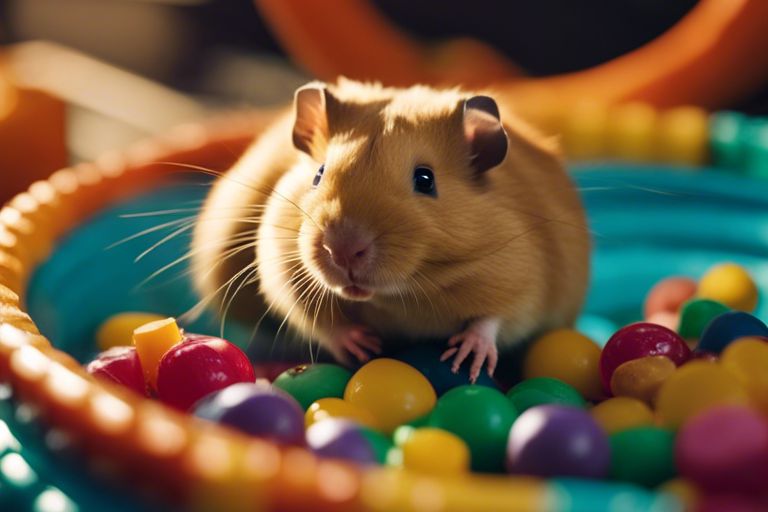
Social Interaction and Enrichment
Understanding Rodent Social Structures
Any rodent owner knows that these small animals thrive in social environments. Understanding the social structures of rodents is crucial for providing the right kind of enrichment for your pet. For instance, some rodents like hamsters are solitary animals and may become stressed if housed together. On the other hand, rats and mice are highly social creatures that benefit from living in pairs or groups.
Introducing New Companions
With the knowledge of your rodent’s social needs, you can consider introducing new companions to provide social interaction and enrichment. Introducing new companions should be done carefully to ensure that all animals are compatible and can coexist peacefully. For instance, gradual introductions in a neutral space can help reduce territorial behavior and aggression.
For instance, if you have a solitary hamster, consider providing alternative forms of enrichment such as interactive toys or tunnels to keep them mentally stimulated. However, if you have a pair of rats, ensure that they have plenty of space, toys, and hiding spots to encourage natural behaviors and social interactions.
Toys and Activities for Mental Stimulation
DIY Enrichment Ideas
The mental well-being of your pet rodent is just as important as their physical health. To keep your furry friend happy and active, there are many do-it-yourself (DIY) enrichment ideas you can incorporate into their daily routine. One simple and effective idea is creating a foraging box filled with bedding and treats for your rodent to dig through and find hidden treasures. You can also make homemade chew toys using safe materials like untreated wood or cardboard tubes, providing both mental stimulation and dental health benefits.
Commercially Available Enrichment Toys
Enrichment toys specifically designed for rodents are widely available in pet stores and online retailers. These toys come in various shapes and sizes, catering to different species and preferences. Some popular options include puzzle feeders that require problem-solving skills to access treats, exercise wheels for physical and mental stimulation, and tunnels or burrowing toys to mimic natural behaviors. They are designed to keep your pet entertained and engaged, promoting a healthy and enriching environment.
With a wide range of commercially available enrichment toys to choose from, you can easily find options that suit your pet rodent’s personality and needs. Whether your furry friend enjoys exploring, climbing, or burrowing, there is a toy available to keep them mentally stimulated and prevent boredom. Investing in these enrichment toys is a simple yet effective way to enhance your pet’s quality of life and ensure they stay happy and active.
Monitoring and Adapting Enrichment Strategies
Observing Behavioral Changes
To ensure the effectiveness of the enrichment strategies you have provided for your pet rodent, it is crucial to observe their behavioral changes regularly. By monitoring their activities, interactions, and overall demeanor, you can gain valuable insights into what is working well and what may need improvement. Pay attention to signs of boredom, stress, or lack of engagement, as these could indicate a need for adjustments in their environmental enrichment.
Adapting Enrichment to Meet Changing Needs
Adapting enrichment strategies to meet your pet rodent’s changing needs is crucial for promoting their overall well-being and happiness. As your rodent grows older, their activity levels, preferences, and abilities may evolve, requiring you to modify their enrichment activities accordingly. It is important to stay observant and responsive to these changes, ensuring that your pet continues to stay mentally and physically stimulated.
By regularly assessing and adapting the enrichment options available to your pet rodent, you can create a dynamic and engaging environment that caters to their specific requirements at every stage of life. This proactive approach will help ensure that your pet remains healthy, active, and content in their living space.
To wrap up
Following this guide on rodent enrichment, you now have a better understanding of the importance of keeping your pet happy and active. By providing a variety of toys, tunnels, wheels, and hiding spots, you can promote mental stimulation and physical exercise for your rodent. Remember to rotate their toys regularly, create different play areas, and offer treats as rewards to keep them engaged and entertained. A well-enriched environment not only prevents boredom and stress but also promotes overall well-being and a longer, healthier life for your furry friend.
With a few simple additions and adjustments to their habitat, you can make a significant difference in your pet rodent’s quality of life. By investing time and effort into enriching their environment, you can ensure that they are happy, active, and thriving. So, take the time to observe your pet’s behavior, customize their enrichment activities accordingly, and enjoy watching them flourish in their enriched, stimulating environment.
FAQ
Q: Why is rodent enrichment important for pet rodents?
A: Rodent enrichment is important for pet rodents to prevent boredom, stimulate their minds, and encourage natural behaviors. It helps keep them happy and active, improving their overall well-being.
Q: What are some examples of rodent enrichment activities?
A: Examples of rodent enrichment activities include providing chew toys, tunnels, exercise wheels, foraging opportunities, climbing structures, and hiding spots. These activities help keep pet rodents mentally and physically engaged.
Q: How often should I change up my rodent’s enrichment activities?
A: It is recommended to change up your rodent’s enrichment activities regularly to prevent them from getting bored. Introducing new toys and activities every week or so can keep things interesting for them.
Q: Are there any safety considerations to keep in mind when providing rodent enrichment?
A: Yes, safety is important when providing rodent enrichment. Make sure all materials are non-toxic, there are no small parts that can be ingested, and that the enrichment items are sturdy and secure to prevent injury.
Q: How can I tell if my pet rodent is enjoying the enrichment activities?
A: You can tell if your pet rodent is enjoying the enrichment activities by observing their behavior. If they are actively engaging with the toys, exploring their environment, and exhibiting natural behaviors like burrowing or climbing, then they are likely enjoying the enrichment provided.
